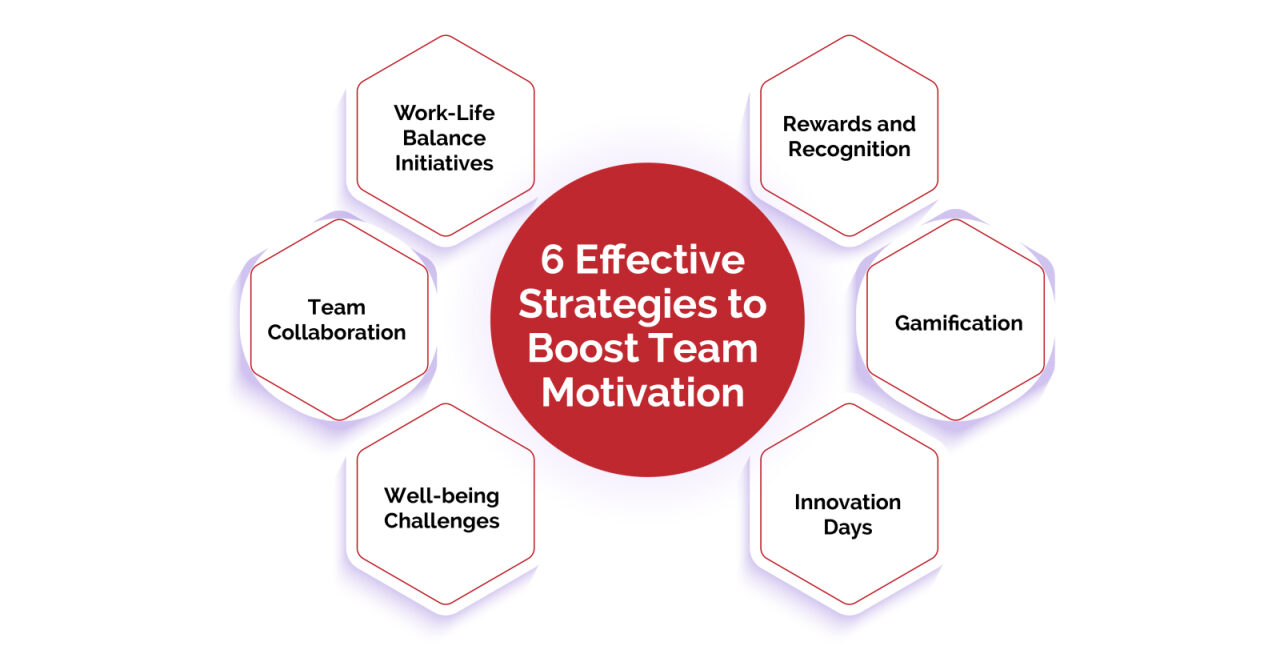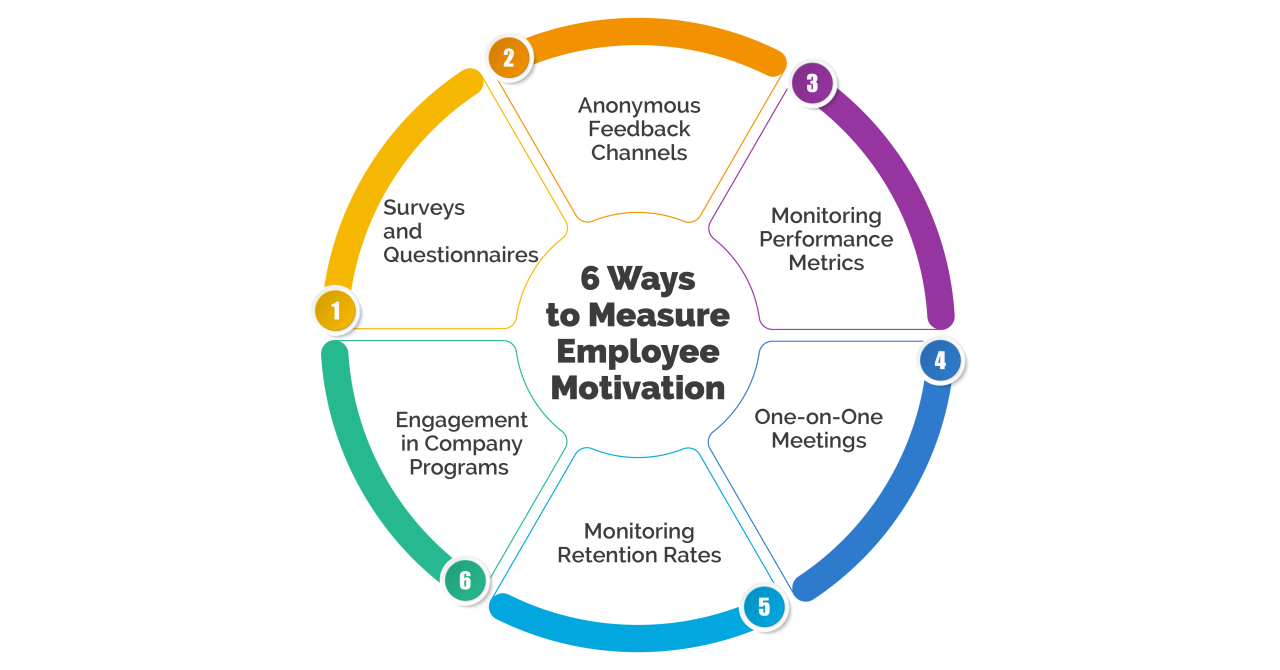In 2025, keeping motivation at work high is more critical than ever as businesses adapt to new challenges and changes. For HR professionals and managers, understanding the factors that influence motivation in the workplace can help create a thriving and productive environment. This article offers actionable strategies to boost motivation, tailored for modern workplaces, ensuring that teams remain energized and committed to long-term success.
Understanding what drives motivation in the workplace is crucial for improving work performance and employee engagement. Several key factors influence motivation at work, all supported by psychological theories that explain how and why they work effectively. Here are the primary motivators:
It’s clear now that workplace motivation plays a critical role in driving overall organizational performance. When employees feel motivated, they are more engaged and committed, directly contributing to the company’s success. Here’s how it impacts key areas:
A motivated workforce is essential for driving higher productivity in an organization. When employees feel engaged and empowered in their roles, their energy and effort towards meeting targets and goals is significantly increased. This leads to enhanced efficiency, focus, and persistence in completing tasks and projects.
According to research, companies with motivated and engaged employees can experience up to a 21% boost in productivity. This means having a motivated workforce enables organizations to get more done in less time. Employees are willing to go the extra mile, take initiative, and even put in additional hours when they feel connected to the company's mission. Their intrinsic desire to perform translates into increased output.
Some tangible ways that motivation enhances productivity include:
Motivation provides the catalyst for unlocking the full potential of a company's human capital. Even a marginal gain of 21% productivity can hugely impact the bottom line results and provide a competitive advantage.
Employee retention represents a crucial metric that links closely to motivation levels within an organization. When employees feel valued, supported, and invested in their professional growth, their engagement and loyalty increases. This motivates them to commit to the company long-term rather than seeking alternative job options.
Research by Gallup discovered that companies with a highly motivated and engaged workforce benefit from 59% lower turnover compared to organizations with poor engagement. Turnover leads to significant recruitment, hiring, and onboarding costs. But perhaps more impactful is the loss of talent and organizational knowledge that occurs. Highly productive and skilled employees leave, taking their expertise with them. This loss of human capital can severely slow down progress.
However, organizations that focus on boosting employee motivation through recognition, career development, work-life balance and other key drivers see much higher retention levels. Motivated employees derive a sense of meaning and purpose from their work. When they feel like their contributions matter, they stick around.
Some key differences that stem from high motivation versus low engagement include:
By keeping employees engaged, companies save significantly on human capital costs while benefiting from the growing expertise developed within their existing teams.
A motivated workforce brings unmatched energy and enthusiasm that permeates throughout the company culture. Employees who feel inspired, recognized, and supported by their leaders and peers contribute to a vibrant, collaborative environment rooted in common purpose and values.
Leaders within organizations that foster high motivation benefit from greater trust and support from their direct reports. Relationships characterized by mutual respect enable quicker decision making, more transparent discussions regarding goals and obstacles, and higher quality execution on deliverables.
Over time, the cultural identity of an organization stems directly from the energy, connection, and engagement of its workforce. A motivated staff transforms the very essence of a company into one characterized by the following:
An organization isn't defined merely by its product or service offerings; culture springs from the shared mindsets, behaviors, and attitudes of those within it.
The ultimate goal of every organization is to not only survive but thrive. Financial health and profitability represent key indicators of a company's prosperity and ability to sustain long-term growth. Motivating employees has been clearly linked to significant gains in financial performance and overall profitability.
Organizations characterized by high employee motivation experience far greater levels of workforce optimization due to increased productivity, employee retention, engagement, and stronger culture. By extracting maximum value from human capital, companies position themselves for profit maximization.
Additionally, a highly committed and loyal workforce drives greater customer satisfaction. Motivated employees go the extra mile to meet customer needs because they genuinely care about service delivery excellence. Their discretionary efforts lead to repeat business, positive word of mouth, and increased share of wallet - all of which impact the bottom line.
The key links between profitability gains and motivation include:
Organizations seeking to drive financial performance must leverage motivation initiatives to realize full economic potential. The numbers speak volumes - motivation pays dividends.
Now that you understand what motivates employees, here are proven strategies to boost your team’s motivation:

A structured rewards and recognition system is one of the most powerful ways to reinforce positive behaviors and boost motivation in the workplace. There are several methods to effectively recognize employees:
Regular, meaningful recognition satisfies the human need to feel valued and encourages behaviors that contribute to organizational success. Both large and small wins should be celebrated.
Gamification refers to introducing elements of game design into non-game contexts. In the workplace, this could involve:
Gamification leverages people’s natural desires for achievement, recognition, and reward. It taps into extrinsic motivation through points and prizes while also driving greater engagement in the work itself, boosting intrinsic motivation.
Innovation days are special events set aside for employees to explore new ideas outside day-to-day work. Activities could include:
The change of pace and focus sparks motivation through creativity, problem-solving, and purpose. It also brings visibility to employees’ talents beyond their usual job duties. Supporting innovation initiatives enhances engagement and an innovative culture.
Company wellness challenges, such as step competitions, meditation workshops, or healthy recipe contests, can boost motivation in several ways:
Research clearly shows poor well-being leads to burnout. Supporting employee health and wellness leads to more motivated and happier teams.
Effective collaboration requires fostering bonding between colleagues and aligning groups towards shared goals. Strategies include:
Collaboration enhances intrinsic motivation by fulfilling the need to belong and feel valued by peers. It also enables achieving more ambitious goals through synergies between diverse skill sets.
Work-life balance allows employees time to manage personal responsibilities so they can sustainably perform without burnout:
Research clearly shows poor work-life balance causes stress and disengagement. Facilitating a healthier balance between work and personal life leads to more motivated, focused, and happy teams. The flexibility shows workers they are valued for more than just productivity.
Measuring motivation is key to understanding employee engagement and satisfaction. Effective methods include:

Conducting regular surveys and questionnaires is one of the most common and effective methods for measuring motivation levels across an organization. These surveys aim to gather both quantitative data through rating scales as well as qualitative insights through open-ended questions. Key topics to cover in motivation surveys include:
Surveys should dig into the factors above using rating scales to benchmark metrics over time as well as open-ended questions to uncover specific areas for improvement. Conducting regular pulse surveys (e.g. quarterly) together with annual engagement surveys provides well-rounded insights.
Anonymous feedback forms provide a confidential means for employees to openly express how they feel about their roles, responsibilities, and workplace challenges. By removing barriers to speaking up, these tools can reveal pain points affecting motivations, even if surveys show positive results.
While anonymity does risk receiving inflammatory input, it encourages honest communication from employees who avoid speaking up directly. Feedback should be regularly reviewed by leadership to address problems before they escalate and severely diminish motivations.
Employees' motivation levels often correlate strongly with productivity and work output. Monitoring performance metrics can reveal dips that signal a lack of drive or disengagement.
Relevant metrics depend on the employee's role but may include:
Using tools to visualize trends makes it easier to catch emerging patterns - like consistent monthly dips or downward trajectories. This data supplements insights from surveys and feedback by exposing the tangible impacts of motivation challenges. Leadership can intervene with targeted solutions before productivity takes a hit.
Managers should conduct regular one-on-one meetings with each team member to openly discuss their motivations, challenges, and overall mindset. This facilitates an ongoing dialogue where emerging issues can surface early before escalating into motivation killers.
1-on-1's also build mutual understanding between managers and employees. Discussions can explore the individualized motivations driving each employee, allowing managers to tailor approaches accordingly.
While surveys offer an aerial view of motivation and feedback channels reveal pain points, 1-on-1s help attach a human face and voice to the lived experiences shaping employees' motivations. Building personal connections sparks intimacy and empathy to solve motivation problems collaboratively.
High employee turnover often links back to motivation problems and disengagement. By monitoring retention metrics across the organization as well as within specific teams, HR can trace resignations to issues diminishing workplace motivations.
Relevant metrics include:
Low retention implies poor alignment between employees' wants and the current environment. Following up exiting staff about their motivations for leaving provides helpful insights. Similarly, stagnant participation numbers signal change initiatives are falling flat at inspiring engagement.
Addressing low retention helps boost motivation and workplace culture over the long term. Otherwise, continuing turnover risks normalizing disengagement.
Finally, monitoring employee participation in internal programs offers real-time indicators of how motivated staff feel towards professional development and company culture.
Metrics for gauging program engagement include:
Low participation signals poor alignment between programming and employee motivations. However, high or growing engagement implies workers feel empowered to direct their own development.
Tying incentives like points or rewards to program participation can also boost engagement, fulfilling intrinsic and extrinsic motivational needs simultaneously.
With research-backed motivational strategies, modern leaders can create workplaces where employees feel energized, valued, and committed to shared success. By understanding these core factors that drive workplace motivation, managers have an incredible opportunity to shape organizational culture and performance.
This website uses cookies to enhance website functionalities and improve your online experience. By browsing this website, you agree to the use of cookies as outlined in our privacy policy .